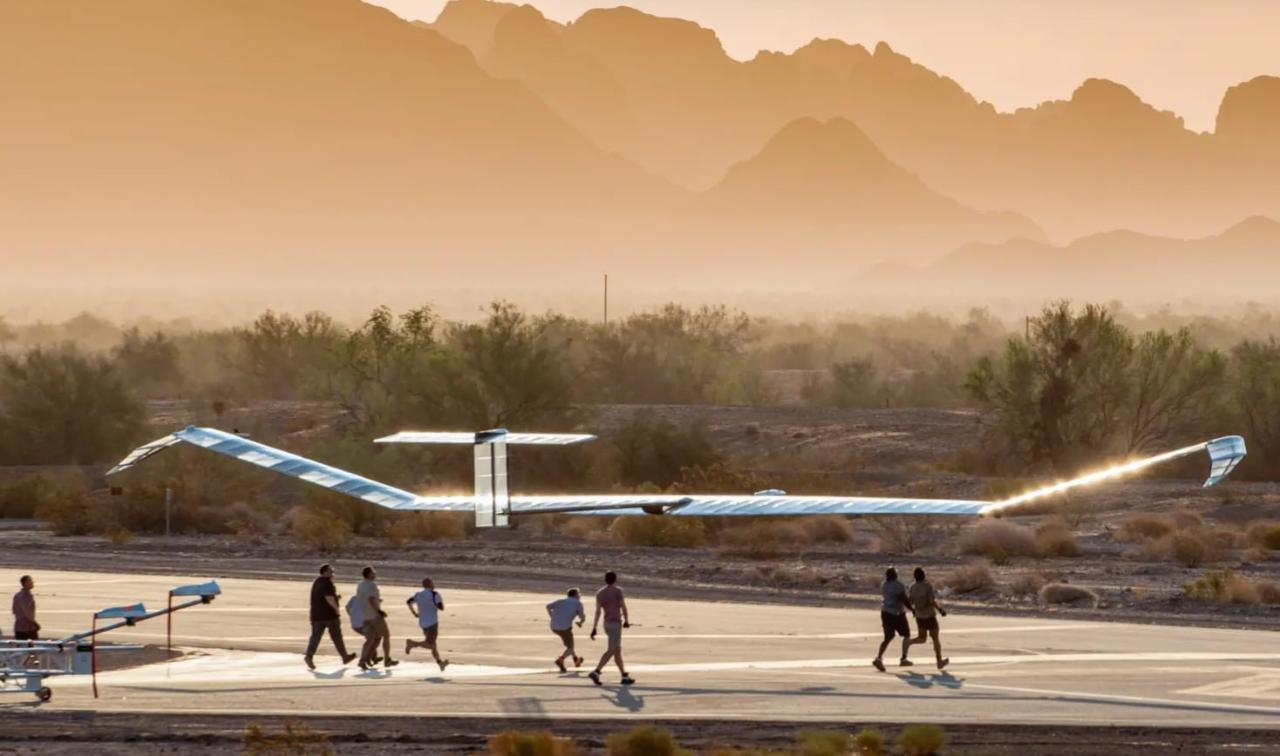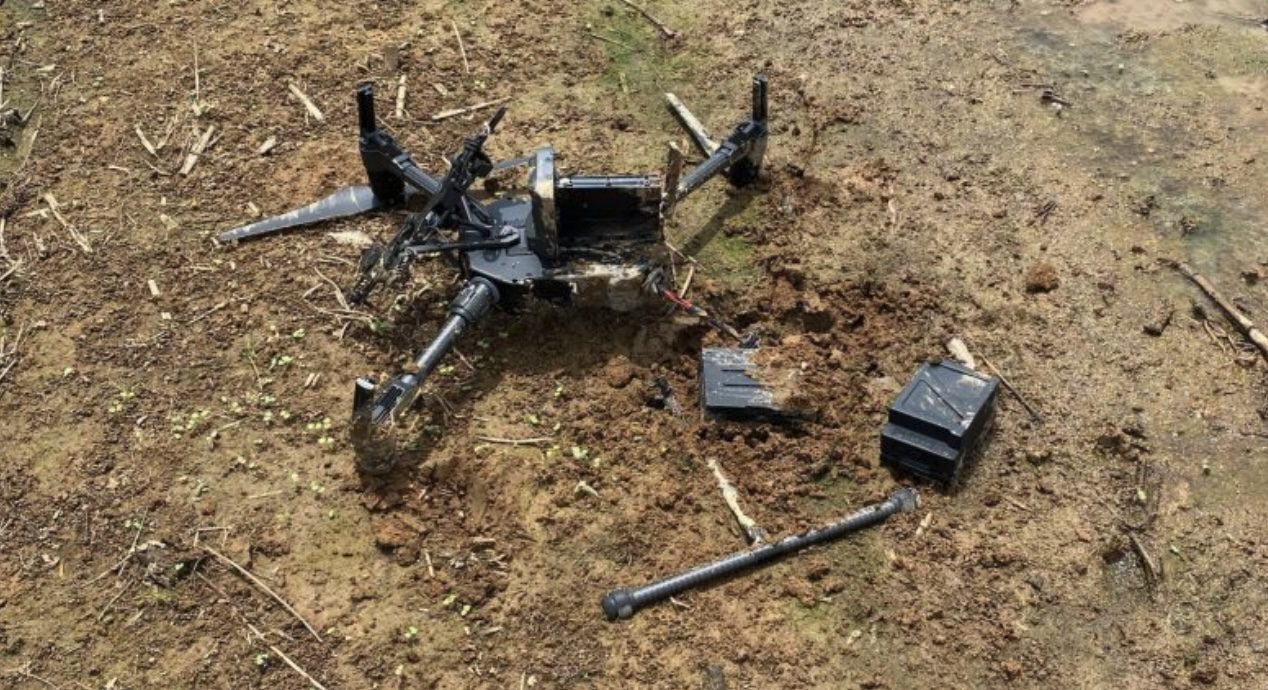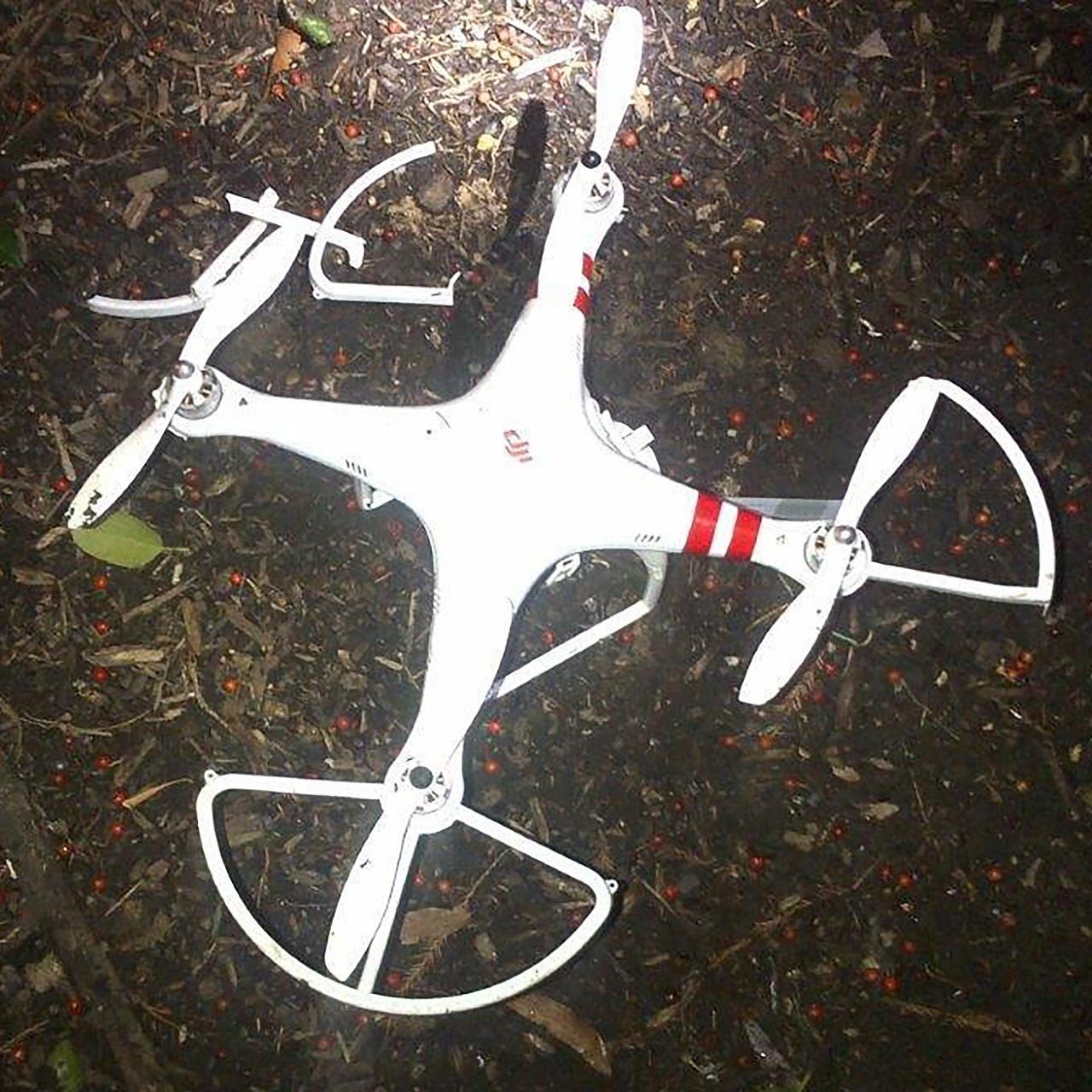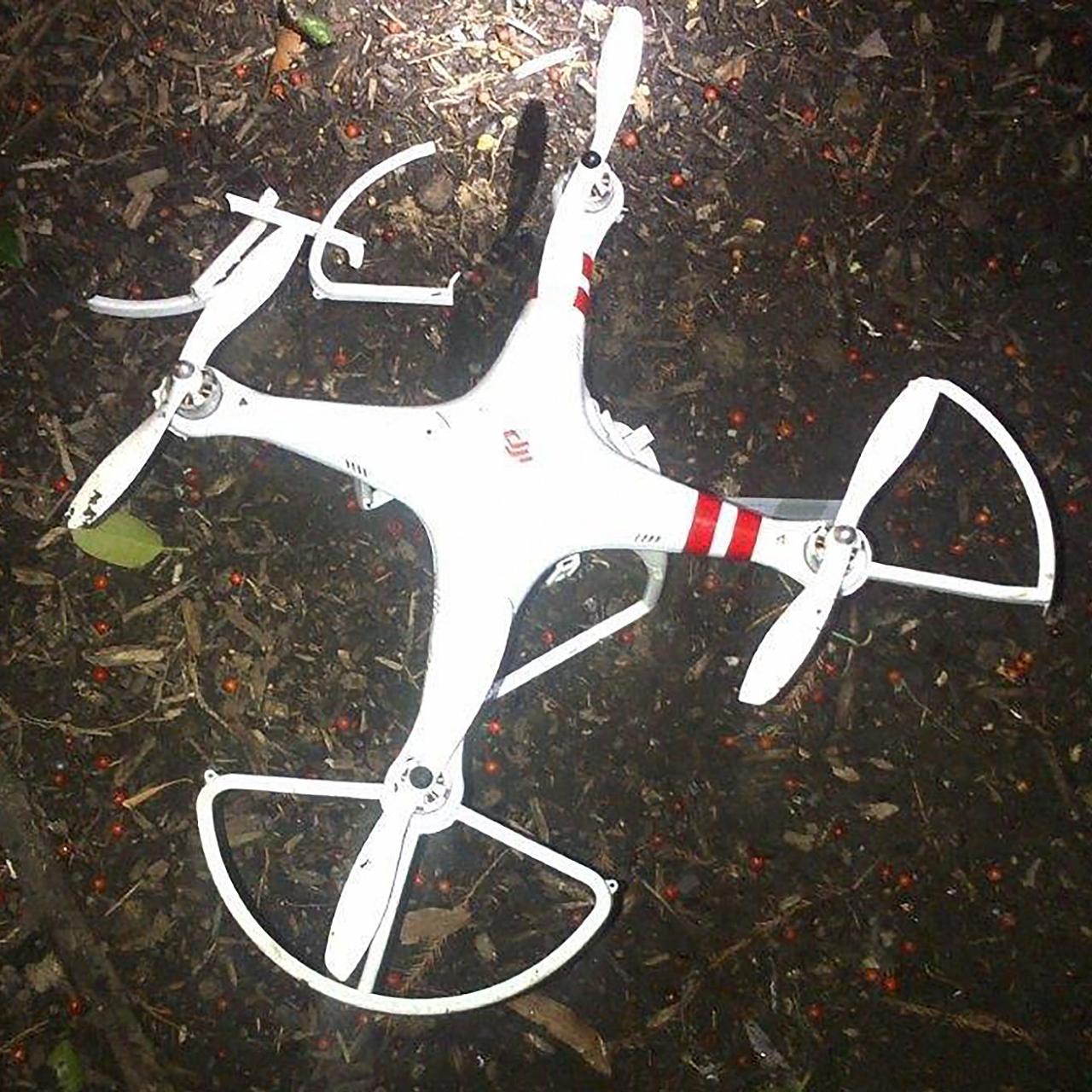Drone crash in Paris: Imagine the scene – a sudden, unexpected crash, disrupting the Parisian skyline. This incident throws a spotlight on the increasing use of drones in urban environments and the critical need for robust safety regulations. We’ll explore the immediate aftermath, the investigation, regulatory issues, public reaction, and long-term implications of this significant event, providing a comprehensive overview of this fascinating and complex situation.
This analysis will delve into the specifics of the drone involved, the potential causes of the crash (from pilot error to mechanical malfunctions), and the ensuing investigation. We’ll also compare Paris’s drone regulations with those of other major cities, highlighting areas for improvement and proposing enhanced safety protocols. Finally, we’ll examine the media’s portrayal of the event and the lasting impact on public perception and the drone industry itself.
Immediate Aftermath of the Drone Crash
The immediate aftermath of a drone crash in a bustling city like Paris would be chaotic and likely involve a rapid response from various emergency services. The initial moments would be marked by confusion and a flurry of activity as people tried to understand what had happened and assess the situation.The scene itself would depend heavily on the location of the crash.
If it occurred in a densely populated area, the impact would be amplified, with more witnesses and potential for greater damage and injuries. A crash in a less populated area would likely lead to a more contained response.
Emergency Response and Bystander Reactions
Emergency services, including police, firefighters, and paramedics, would be dispatched immediately upon receiving reports of the crash. The police would likely secure the area, preventing further access and ensuring public safety. Firefighters might be needed to address any fires or structural damage caused by the impact. Paramedics would attend to any injured individuals, providing immediate medical assistance and transporting them to nearby hospitals.
Bystanders’ reactions would range from shock and concern to curiosity and perhaps even fear, depending on the severity of the incident and their proximity to the crash site. Some might attempt to assist, while others might simply observe from a safe distance. Initial reports from authorities would likely be brief and focus on confirming the incident, assessing the extent of damage and injuries, and initiating the investigation into the cause of the crash.
Damage Caused by the Drone Crash
The extent of the damage caused by the drone crash would depend on several factors, including the size and weight of the drone, its speed at impact, and the nature of the object it collided with. Potential damage could range from minor property damage, such as scratches or dents on buildings or vehicles, to more significant damage, such as broken windows or structural damage.
If the drone was carrying a payload, the damage could be even more severe. Environmental damage might be minimal unless the drone was carrying hazardous materials. In the case of a larger drone or a high-speed impact, there’s a potential for more extensive damage, including injuries to people in the vicinity.
Timeline of Events (First Hour)
A possible timeline of events in the first hour following the drone crash could look like this:* 0-5 minutes: Drone crash occurs. Witnesses call emergency services. Initial reports flood social media.
5-15 minutes
First responders arrive on the scene. Area is secured. Initial assessment of damage and injuries begins.
15-30 minutes
Paramedics treat any injured individuals. Police begin preliminary investigation. Traffic may be diverted.
That drone crash in Paris last week really got people talking about safety regulations. It made me wonder about the overall number of incidents, so I checked out this really useful resource on drone crashes in Paris to get a better picture. Understanding the frequency of these incidents is key to preventing future drone crashes in Paris.
30-60 minutes
More detailed assessment of the damage is undertaken. Further investigation into the cause of the crash commences. Initial press releases might be issued by authorities. Depending on the severity, the area may remain cordoned off for an extended period. Any casualties would have been transported to the hospital by this time.
Investigation and Identification

Following the drone crash in Paris, a comprehensive investigation was launched to determine the cause and identify the responsible parties. This involved a multi-faceted approach, combining on-site forensic analysis with a detailed review of flight data and regulatory compliance. The goal was not only to understand what happened but also to prevent similar incidents in the future.The investigation focused on identifying the drone, determining its flight path, and analyzing any potential contributing factors to the crash.
This involved careful examination of physical wreckage and digital evidence.
Drone Identification
Investigators first worked to identify the specific drone model involved. This process began with a visual examination of the recovered wreckage, focusing on identifying manufacturer markings, model numbers, and any unique serial numbers or modifications. Photographs and detailed sketches were created to document the drone’s physical characteristics. If the drone’s electronic components survived the crash, investigators could access its internal memory to retrieve flight data and potentially identify the owner or operator through registration information.
For example, if the drone was a DJI Mavic 3, investigators would look for specific features like its foldable arms, the unique camera design, and the manufacturer’s markings on the body and battery. The presence of any custom paint jobs or modifications would also be noted as unique identifiers.
Investigative Procedures and Evidence Collection
The investigation involved a methodical approach to evidence collection. The crash site was secured to prevent contamination or tampering. All debris, including fragments of the drone, were carefully collected, cataloged, and preserved as evidence. Witnesses were interviewed to gather accounts of the events leading up to the crash. Investigators also reviewed air traffic control recordings and security camera footage from the area to reconstruct the drone’s flight path and determine the circumstances surrounding the incident.
Digital forensics experts examined any recovered electronic components from the drone to retrieve flight logs, GPS data, and other relevant information. This data would include information on the drone’s altitude, speed, direction, and battery levels. Analyzing this data could reveal whether the drone experienced any malfunctions or unexpected changes in flight parameters.
Potential Causes of the Crash
Several potential causes were investigated. Pilot error could have been a factor, such as loss of control due to inexperience, poor judgment, or distraction. Mechanical failure, such as a malfunction in the drone’s motors, propellers, or flight control system, was also considered. Examples of this might include a sudden motor failure mid-flight, a propeller detaching, or a GPS signal loss leading to uncontrolled descent.
Finally, external factors such as strong winds, unexpected obstacles (e.g., birds or buildings), or interference with the drone’s radio signal were examined. For instance, a sudden gust of wind could have overwhelmed the drone’s stabilization system, while interference from other radio signals could have disrupted the communication between the pilot and the drone, causing it to lose control. The investigation would weigh the evidence gathered from all these areas to arrive at a conclusive cause.
Drone Regulations and Safety Measures: Drone Crash In Paris
Drone regulations and safety protocols are crucial for preventing accidents and ensuring the safe integration of unmanned aerial vehicles (UAVs) into urban airspace. The recent drone crash in Paris highlights the need for robust and consistently enforced regulations across major cities globally. This section will compare and contrast regulations in Paris with other major cities, detail existing safety measures, and propose improvements for Paris’s drone safety protocol.
Comparison of Drone Regulations Across Major Cities
Paris, like many major cities, faces the challenge of balancing the innovative potential of drones with the need to maintain public safety and security. Regulations vary significantly internationally. For example, New York City has stricter rules regarding drone operation near airports and critical infrastructure than, say, London, which has a more permissive approach in certain designated areas. Tokyo has a very rigorous licensing and registration process, while some smaller European cities might have less formal guidelines.
These differences reflect varying levels of technological preparedness, infrastructure considerations, and public acceptance. Specific regulations often address flight altitudes, proximity to sensitive areas, and required pilot certifications. A common thread is the increasing trend towards designated drone flight zones and the use of geofencing technology to restrict access to restricted airspace.
Current Safety Measures in Paris and Other Urban Areas
Current safety measures typically include licensing and registration requirements for drone operators. In many jurisdictions, operators must pass a competency test demonstrating their understanding of air traffic regulations, safety procedures, and emergency response protocols. Registration often involves providing identifying information about the drone and its operator, facilitating accountability in case of accidents or violations. Airspace restrictions are commonly implemented around airports, government buildings, and other critical infrastructure, often using geofencing technology to prevent unauthorized drone entry.
Furthermore, many cities utilize technologies such as drone detection systems and counter-drone measures to monitor and respond to unauthorized drone activity. Public awareness campaigns also play a role in educating drone users about safe and responsible operation.
Proposed Improved Safety Protocol for Drone Operation in Paris, Drone crash in paris
To further enhance drone safety in Paris, several improvements to the existing regulations could be considered. First, a more robust system for drone identification and tracking could be implemented, perhaps incorporating a real-time tracking system that integrates with air traffic control. This system could be integrated with a centralized database of registered drones and their operators, allowing for rapid identification in case of an accident or unauthorized flight.
Second, the establishment of clearly defined and easily accessible drone flight zones within the city, possibly color-coded to indicate different levels of restriction, would improve clarity and reduce ambiguity for operators. Third, mandatory drone insurance could be introduced, ensuring that victims of drone accidents have access to compensation. Finally, investment in advanced drone detection and mitigation technologies could further enhance the security of Parisian airspace, enabling authorities to swiftly respond to unauthorized drone activity.
These improvements, combined with continued public education campaigns, could significantly reduce the risk of future drone accidents in Paris.
Public Reaction and Media Coverage
The drone crash in Paris elicited a wide range of reactions, from shock and concern to fascination and even humor, as seen across various media platforms. The incident, unfolding in a city known for its iconic landmarks, quickly became a global news story, prompting diverse interpretations and levels of engagement from the public. The speed and reach of social media amplified these reactions, creating a complex and multifaceted public discourse surrounding the event.The immediate aftermath saw a flurry of activity on social media platforms like Twitter and Instagram.
Many users shared videos and photos of the incident, some expressing disbelief and concern for potential damage or injuries, others focusing on the unusual nature of the event. News reports varied in their tone and focus, ranging from serious analyses of the safety implications to more sensationalized accounts emphasizing the dramatic nature of the crash. Public statements from officials, both local and national, were carefully worded, balancing the need for reassurance with the ongoing investigation.
Social Media Reactions
Social media offered a real-time window into public reaction. Initial posts were dominated by eyewitness accounts, often accompanied by amateur videos showing the drone descending and the subsequent aftermath. Some users expressed fear for the safety of bystanders, while others found the situation humorous or ironic, posting memes and witty comments. The diversity of reactions highlighted the multifaceted nature of the event and the varying perspectives of those who witnessed it or learned about it through online channels.
Trending hashtags related to the incident quickly emerged, allowing for the aggregation and amplification of public sentiment. For example, a hashtag like #ParisDroneCrash became a hub for both serious discussions and more lighthearted commentary.
News Media Coverage Comparison
| News Outlet | Headline Emphasis | Tone | Significant Omissions/Biases |
|---|---|---|---|
| Le Monde | Safety concerns, investigation details | Serious, informative | Potentially underplayed initial public reaction on social media. |
| BBC News | International impact, drone regulations | Neutral, balanced | Limited focus on specific Parisian public sentiment beyond official statements. |
| CNN | Visual spectacle, potential security threat | More sensationalized | May have overemphasized the potential for malicious intent, lacking detailed evidence. |
| Local Parisian Newspaper (Example: Le Parisien) | Local impact, eyewitness accounts | Mixed, ranging from serious to anecdotal | Possibly lacked broader international perspective on drone regulations. |
Media Portrayal Across Formats
News articles provided detailed accounts of the crash, focusing on the investigation and the potential implications for drone regulations. Social media posts, however, offered a wider range of perspectives, including eyewitness accounts, humorous commentary, and speculation. Videos, both professional and amateur, captured the event from different angles, offering a more visceral experience for viewers. The contrast between the formal tone of news reports and the informal, often emotional, nature of social media posts highlighted the diverse ways in which the event was interpreted and consumed by the public.
For example, a news article might emphasize the technical aspects of the drone malfunction, while a social media post might focus on the emotional impact on nearby residents.
Long-Term Impacts and Preventative Measures
The drone crash in Paris, while a singular event, had ripple effects across drone regulations, public perception, and the drone industry itself. The incident highlighted existing vulnerabilities in safety protocols and spurred significant changes in how both authorities and drone operators approach flight operations within the city’s airspace. The long-term consequences are far-reaching and will likely shape drone usage in Paris for years to come.The immediate aftermath of the crash led to a period of heightened scrutiny.
Public concern over safety, coupled with the media’s intense coverage, created a climate where reassessment of existing regulations was unavoidable. This period also saw a temporary dip in the popularity of drone usage for both recreational and commercial purposes, as uncertainty reigned over future regulations. The economic implications for the burgeoning drone delivery services in the city, for instance, were immediately apparent.
So, a drone crashed in Paris, right? That got me thinking about large-scale drone operations and the potential for things to go wrong. It’s a reminder of incidents like the orlando drone show accident , which highlighted the importance of safety protocols. Ultimately, the Paris crash underscores the need for robust safety measures in all drone operations, no matter the size or location.
Changes to Drone Legislation and Safety Protocols
The crash prompted a comprehensive review of existing drone regulations in Paris. This resulted in stricter licensing requirements for commercial drone operators, including more rigorous flight training and safety assessments. Furthermore, new geofencing technologies were implemented, restricting drone flights over sensitive areas like historical landmarks and densely populated zones. These geofences, enforced through GPS tracking and communication protocols, were designed to prevent unauthorized drone operations in restricted airspace.
The city also invested heavily in drone detection systems, utilizing radar and other technologies to identify and track unauthorized drone activity. These changes aimed to create a safer and more controlled airspace above Paris. For example, the implementation of mandatory drone registration and insurance policies mirrors similar adjustments seen in other major cities globally following similar incidents.
Preventative Measures to Reduce Future Drone Crashes
The implementation of stricter regulations alone is not sufficient to guarantee the complete absence of future drone crashes. A multi-pronged approach is necessary, incorporating both technological advancements and enhanced public education.The following preventative measures could significantly reduce the likelihood of future incidents:
- Improved Drone Technology: Implementing fail-safe mechanisms such as automatic return-to-home functions and redundant systems to prevent crashes caused by technical malfunctions. This includes advancements in battery technology to minimize the risk of mid-flight power failures.
- Enhanced Pilot Training and Certification: More rigorous training programs for both recreational and commercial drone pilots, encompassing advanced flight maneuvers, emergency procedures, and airspace awareness. This could include simulator-based training to hone skills in various scenarios.
- Advanced Airspace Management Systems: Utilizing advanced air traffic management systems to monitor and control drone traffic in real-time, providing a clear picture of drone activity within designated airspace. This would enable rapid response to potential hazards.
- Public Awareness Campaigns: Educating the public on responsible drone operation, including the legal restrictions and potential consequences of violating safety regulations. This could involve public service announcements, online resources, and educational programs.
- Improved Drone Detection and Response Systems: Investing in sophisticated drone detection systems capable of identifying unauthorized drone activity and quickly deploying countermeasures, such as jamming signals or physically intercepting drones.
- Strengthened Enforcement of Regulations: Robust enforcement mechanisms to ensure compliance with existing regulations and deter unauthorized drone operations. This includes increased surveillance and stricter penalties for violations.
Illustrative Description of the Crash Site

The crash site, located in a bustling Parisian arrondissement near the Seine River, presented a stark contrast between the city’s usual vibrant energy and the sudden, jarring stillness following the drone’s impact. The immediate area was a mix of cobblestone streets, elegant Haussmann-era buildings, and charming cafes, all now subtly altered by the event’s aftermath.The drone, a sleek, black quadcopter, came to rest embedded in a small, meticulously maintained flowerbed outside a patisserie.
The scent of freshly baked bread hung heavy in the air, oddly juxtaposed with the metallic tang of the damaged drone and the faint smell of burning electronics. The sounds of the city – the rumble of traffic, the chatter of pedestrians – were muted, replaced by the hushed whispers of onlookers and the low hum of emergency vehicles arriving on the scene.
Broken pieces of the drone, scattered across the flowerbed and the pavement, glinted in the afternoon sun.
Drone Trajectory and Impact
Based on eyewitness accounts and recovered flight data (where available), the drone appeared to be descending rapidly from a relatively high altitude (estimated at approximately 150 feet), its speed increasing in the final moments before impact. Its trajectory, according to witness testimonies, was initially a straight line but then veered slightly to the left before striking the flowerbed at a steep angle.
The drone’s final direction was roughly southwest, towards the Seine River. The impact caused significant damage to the drone’s frame and internal components, scattering debris across a radius of several feet.
That drone crash in Paris got me thinking about drone safety regulations. It’s a serious issue, especially considering the potential for large-scale accidents like the one at the orlando drone show accident , which highlighted the need for better technology and operator training. Ultimately, preventing similar incidents in Paris, or anywhere else, requires a multi-pronged approach to safety.
Visual Representation of the Crash Site
Imagine a bird’s-eye view of the scene. The central focus is the mangled drone, its four arms splayed out like a broken insect, lying half-buried in the vibrant red and yellow petunias of the flowerbed. The surrounding area is typical Parisian architecture: tall, narrow buildings with ornate balconies, lined up along neatly paved streets. A small crowd of onlookers, a mix of tourists and residents, stands behind a police cordon, their faces a mixture of curiosity and concern.
The patisserie, with its inviting window display of pastries, is just a few feet from the crash site, its façade untouched but the atmosphere undeniably altered by the unexpected event. A small section of the pavement is marked off by police tape, indicating the area where drone fragments were recovered. The Seine River, shimmering in the sunlight, can be seen in the background, a calm contrast to the chaos of the immediate crash site.
Final Thoughts

The drone crash in Paris serves as a stark reminder of the potential dangers associated with unmanned aerial vehicles in densely populated areas. While the immediate aftermath may involve damage and disruption, the long-term consequences extend to the evolution of drone regulations, public safety awareness, and the technological advancements needed to mitigate future risks. Understanding the intricacies of this incident provides valuable insights into how we can navigate the increasingly complex relationship between drones and urban environments, ensuring both innovation and safety.
Answers to Common Questions
What type of damage was caused by the drone crash?
The extent of the damage will depend on the specifics of the crash, but it could range from minor property damage (e.g., broken windows) to more significant structural damage, depending on where the drone impacted.
Were there any injuries reported?
This will depend on the specific incident. The possibility of injuries ranges from none to serious, depending on the size and weight of the drone, the location of the crash, and the impact velocity.
How long did the investigation take?
Drone crash investigations can vary in length, depending on the complexity of the incident and the resources available. It could take days, weeks, or even months to determine the exact cause.
What are the penalties for violating drone regulations in Paris?
Penalties for violating drone regulations vary depending on the severity of the violation and can include fines, license suspension, or even criminal charges.
